Introduction
The evolution of green fuel technologies is a testament to human innovation and dedication to a sustainable future. The quest for alternative fuels has been marked by significant milestones, many of which were spearheaded by individuals with extensive expertise in energy and environmental sectors. The energy sector's transformation is further exemplified by the shipping industry, where an aging fleet is being challenged to meet stringent emission standards.
This push for cleaner energy is echoed across various sectors. As renewable energy investments flourish in regions like India, the global reach of these advancements becomes evident. Renewable energy's growth is notable; its share of total primary energy consumption rose to 14.6% in 2023.
The record-breaking generation of renewable electricity—4,748 TWh, driven by solar and wind—underscores a 13% increase from the previous year. Such statistics showcase the tangible impact of green technologies and the increasing reliance on renewable sources. The narrative of green fuel technologies is not just a chronicle of innovation but a story of individuals and industries coming together to reshape our energy landscape.
It's a journey marked not only by the milestones achieved but also by the promising horizon of a cleaner, more sustainable future.
Historical Background and Evolution of Alternative Fuels
The evolution of green fuel technologies is a testament to human innovation and dedication to a sustainable future. The quest for alternative fuels has been marked by significant milestones, many of which were spearheaded by individuals with extensive expertise in energy and environmental sectors. For instance, Ric, boasting over four decades in the energy field, has significantly contributed to the development of over 8GW of renewable power projects in North America. His accomplishments, alongside pioneers in carbon capture and sequestration, reflect the collective progress in green energy.
The energy sector's transformation is further exemplified by the shipping industry, where an aging fleet is being challenged to meet stringent emission standards. This push for cleaner energy is echoed across various sectors. In February 2020, BP Inc. set a bold vision to achieve net-zero emissions by 2050, highlighting the oil and gas industry's role in the energy transition. As renewable energy investments flourish in regions like India, the global reach of these advancements becomes evident.
Renewable energy's growth is notable; its share of total primary energy consumption rose to 14.6% in 2023. The record-breaking generation of renewable electricity—4,748 Twh, driven by solar and wind—underscores a 13% increase from the previous year. Such statistics showcase the tangible impact of green technologies and the increasing reliance on renewable sources.
Professionals like Brian, with a background in procurement and supply chain operations within the forestry industry, and Alyssa, who spent a decade on large-scale energy conservation projects, reinforce the importance of strategic and operational expertise in driving the growth of green technologies.
The narrative of green fuel technologies is not just a chronicle of innovation but a story of individuals and industries coming together to reshape our energy landscape. It's a journey marked not only by the milestones achieved but also by the promising horizon of a cleaner, more sustainable future.
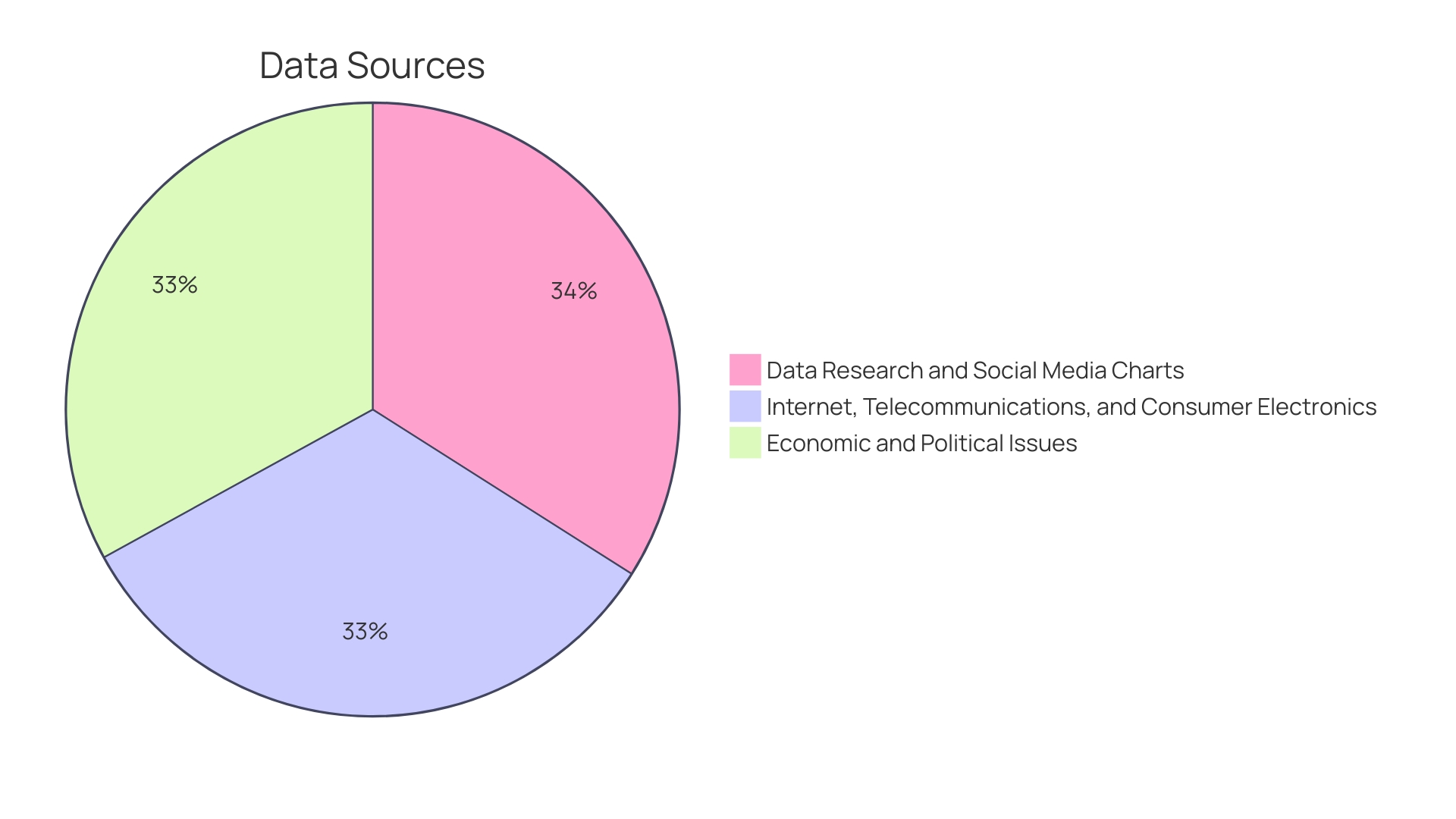
Key Concepts and Definitions in Green Fuels
To appreciate the scope of green fuel technologies, it's essential to decipher the terminology underpinning this sector. Green hydrogen stands out as a pivotal advancement in the renewable energy landscape. It's produced via electrolysis, where electricity—sourced from wind, solar, or hydro—splits water into hydrogen and oxygen. This process is lauded for its minimal greenhouse gas emissions, positioning it as a sustainable alternative to traditional hydrogen production reliant on fossil fuels.
The innovation doesn't stop at production; green hydrogen exhibits versatility and ease of storage, making it a formidable player in the quest for carbon neutrality. It's leveraged in various applications, from decarbonizing energy-intensive industries like steel and cement to propelling advancements in heavy mobility sectors such as aviation and maritime transport.
These strides in green hydrogen utilization were vividly demonstrated by the HyFlexPower project at a Smurfit Kappa paper mill in France. The project showcases a 'Power-to-Hydrogen-to-Power' system, affirming the viability of storing renewable energy as hydrogen to later generate electricity. This breakthrough aligns with the broader aim of industrial decarbonization, a goal underscored by the commitment of entities like ENGIE, which aspires to lead the renewable hydrogen domain.
Simultaneously, the realm of sustainable energy is not confined to renewables. The term 'clean energy' extends to resources that, while not necessarily renewable, have a reduced carbon footprint. This encompasses bridge technologies like nuclear power and natural gas, which, despite their environmental trade-offs, contribute to lower carbon emissions during operation.
Understanding these nuanced distinctions among 'clean,' 'green,' 'renewable,' and 'sustainable' is vital for navigating the future of energy. With 22.5% of the EU's energy consumption in 2022 coming from renewable sources, the momentum is building. Yet, to achieve the ambitious target of 42.5% by 2030, a profound transformation of energy systems is imperative, highlighting the significance of these advancements in green fuel technologies.
Advancements in Electric Vehicles and Their Impact
Electric vehicles (EVs) are at the forefront of the shift towards more sustainable transportation, with innovations in battery technology, charging infrastructure, and increased range capabilities playing pivotal roles. Notably, the market for EVs is expanding rapidly, with new records set in the United States as sales surpassed 1 million fully battery-powered vehicles in a single year, marking a 50.7 percent growth from the previous year. With over 1.4 million EVs sold in 2023, electric models now represent 9.1 percent of new passenger vehicle sales, a testament to their growing acceptance fueled by a broader variety of models and improved consumer economics.
Battery technology is a critical area of focus, as the global demand for EV energy is projected to increase significantly. By 2050, EV battery energy requirements are expected to reach 14 terawatt hours, a staggering 90-fold increase from 2020. To meet this demand, batteries must be energy-dense, fast-charging, durable, temperature resilient, safe, and affordable. Companies like Rivian are pioneering in this space, committing to net-zero emissions by 2040 and striving for sustainable raw material supply chains and minimal waste.
Charging infrastructure advancements are also essential. While electric vehicles offer numerous advantages, such as instant torque and greater energy efficiency compared to internal combustion engines, charging times remain a challenge. The fastest fast-charging stations can replenish an EV's battery from 10 to 80 percent in approximately 18 minutes, but more commonly, drivers may wait 30 to 40 minutes. This has sparked interest in alternative technologies like hydrogen fuel cells, despite their lower overall efficiency.
As electric vehicle adoption follows the 'S-curve' characteristic of many transformative technologies, countries like Norway have already seen EVs constitute a significant portion of new car sales, rising from 5 percent in 2013 to a dominant market presence. This trend underscores the potential for EVs to achieve mass adoption worldwide, signaling a profound change in the automotive industry's approach to climate change, with electric vehicles leading the charge in this green revolution.
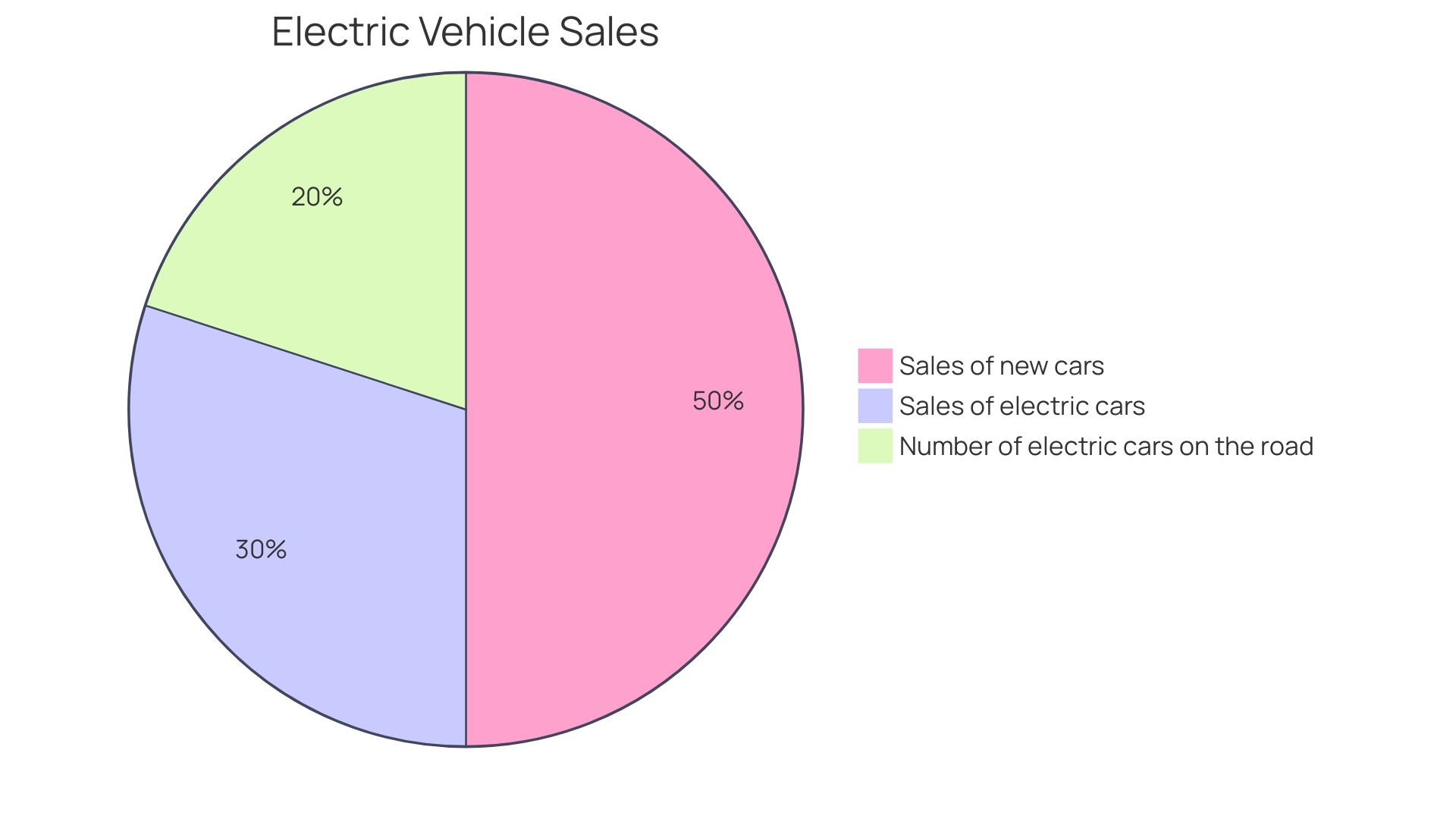
Biofuels and Renewable Energy: Benefits and Challenges
Bio-based diesels, including biodiesel and renewable diesel, are paving the way for greener fuel technologies. Both are derived primarily from vegetable oils—over 80% of their composition—making them similar to the cooking oils found in grocery stores. Notably, the remainder is often sourced from animal fats, with soybean and canola oils being predominant.
These biofuels are interlinked with diesel fuel through blending and share regulatory support. They represent a crucial step towards reducing greenhouse gas emissions, as they are formulated using the same materials and adhere to comparable standards. Furthermore, the utilization of byproducts like corn oil, a residue from ethanol production, contributes to a more efficient waste-to-energy conversion process.
Senior Economist Justin Shepherd of FCC emphasizes the significance of bio-based diesel in the context of oil and fat availability. A growing focus has been placed on 'yellow grease', a term that includes used cooking oil and lower-grade tallow, to supplement feedstock sources.
On the renewable energy front, bioenergy emerges from biomass, consisting of organic materials such as plants and animal waste. Its transformation into energy occurs through direct combustion or chemical processes at biorefineries, offering a versatile application range from transportation fuel to replacements for petroleum-based products.
However, the transition to bioenergy isn't without its complications. Challenges encompassing cost and efficiency are central to the debate. Historically, first-generation biofuels have relied on food crops like corn and soy, which compete with food production and raise sustainability concerns. The industry is now shifting towards second-generation biofuels, which utilize non-edible plant biomass, circumventing the food versus fuel issue.
Biofuels boast a significantly lower net CO2 emission profile throughout their lifecycle compared to fossil fuels, with potential reductions up to 90%. This attribute is particularly advantageous for sectors where electrification poses challenges, including heavy transport and industry.
The environmental impact of biofuels is also reflected in the 'Kyoto basket' of greenhouse gases, which measures emissions in CO2-equivalents. Greenhouse gas inventories highlight the contribution of various sectors to these emissions, underscoring the role of sustainable fuel options like biofuels in mitigating climate change.
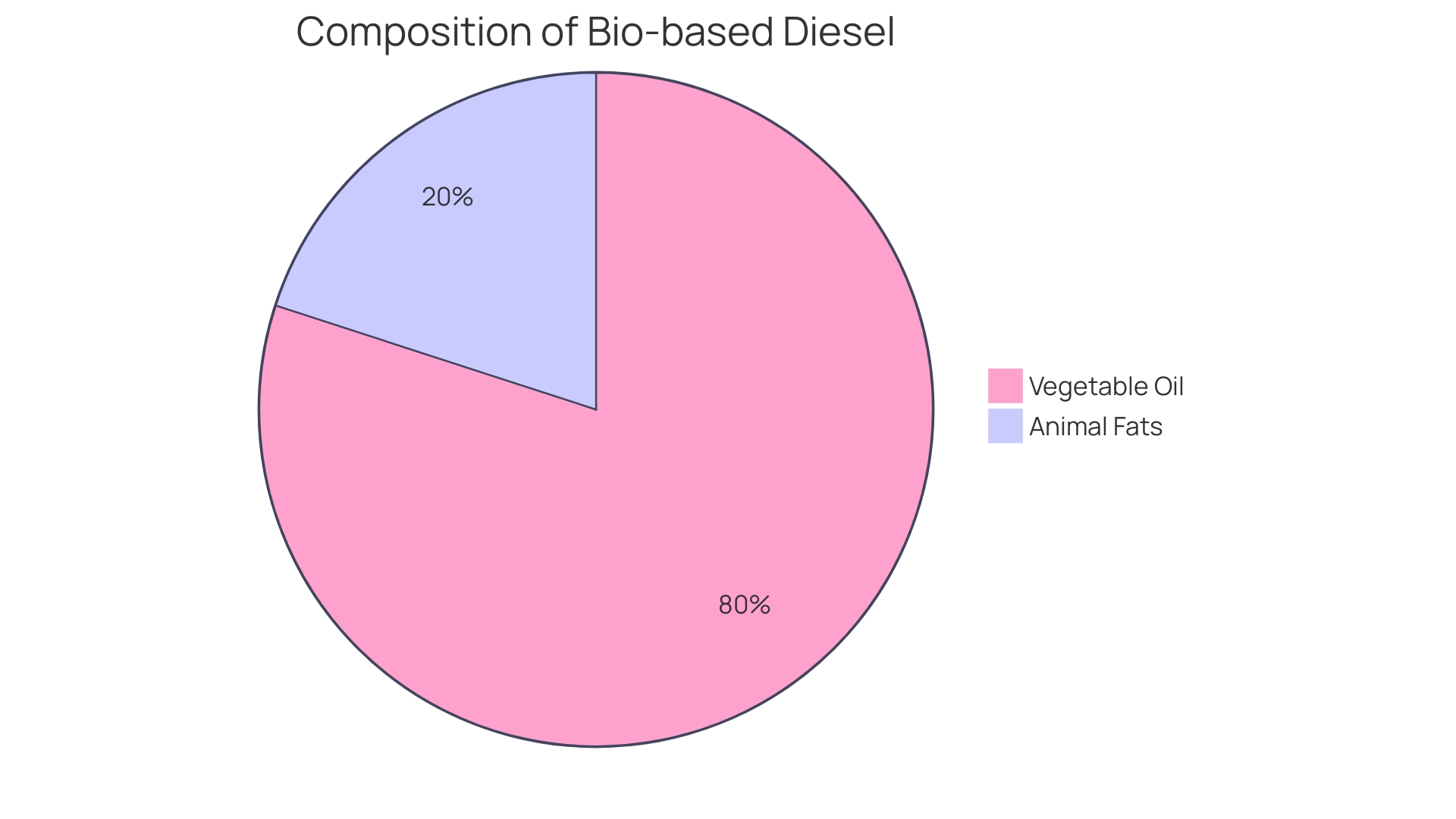
Hydrogen as a Promising Alternative Fuel
Advancements in hydrogen fuel cell technology are transforming the energy landscape with a focus on sustainability and zero emissions. Hydrogen fuel cells, which convert hydrogen and oxygen into electricity, offer a continuous energy source as long as the necessary fuels are supplied. As the most abundant element, hydrogen presents a vast potential for sustainable energy.
Fuel cell technologies are not only theoretical concepts but are also being applied in real-world scenarios. A notable example is the Energy Observer, a former racing catamaran now serving as a floating laboratory for sustainable energy experiments. This vessel accomplishes energy self-sufficiency through solar panels, wind power, and a hydrogen fuel cell system developed by Toyota, showcasing the viability of these technologies in maritime applications.
Hydrogen's role in decarbonizing sectors that are difficult to abate is crucial, contributing to a cleaner and more resilient energy system. The global project pipeline for hydrogen is expanding, with investments reaching USD 570 billion and encompassing over 1,400 projects. These developments signify a growing commitment to hydrogen as a key player in the future energy mix.
Driving this momentum, the market for hydrogen fuel cells is thriving, especially with the increasing adoption of electric vehicles. Governments are taking note of the potential to reduce carbon emissions, and environmental consciousness is fueling the demand. Hydrogen fuel cells are versatile, ranging from portable systems for recharging smartphones to large-scale installations that directly supply power to the electrical grid.
Despite the optimism, challenges such as cost, infrastructure development, and regulatory uncertainty persist. Yet, organizations like Arrow Transportation Systems and Metro Vancouver are exploring innovative transportation solutions, while the Center for Transportation and the Environment provides expertise in deploying these technologies. The consensus among experts is clear: fuel cells are a game-changer, capable of supplying clean electricity from a variety of natural fuels without the need for transmission lines, thus offering increased reliability and energy security.
As the hydrogen ecosystem matures, it is poised to play a pivotal role in enabling a sustainable future, with fuel cells at the forefront of this transformation.
Case Studies: Successful Implementations of Alternative Fuels
Exploring the potential and practicality of green fuel technologies is critical as industries around the world pivot towards sustainability. One striking example is the aviation industry's efforts, spearheaded by Delta Air Lines, to adopt Sustainable Aviation Fuel (SAF). With jet fuel accounting for the lion's share of aviation emissions, Delta's commitment to replace 10% of its annual 4 billion gallons of jet fuel with SAF by 2030 is a bold step. SAF, derived from renewable waste materials like used cooking oil, offers a drop-in solution compatible with current engines and infrastructure, demonstrating significant potential for carbon reduction.
In academia, the real-world impact of SAF has captivated students from diverse fields. Waubonsee Community College students, regardless of their major, have delved into SAF case studies, assessing life-cycle impacts and drawing connections to energy and the environment. The robust resources provided have enriched their educational experience, indicating the effectiveness of interdisciplinary approaches to understanding green technologies.
The maritime industry is not far behind, with the world's first methanol-powered container ship, the Laura Maersk, docking at the Port of Felixstowe. This vessel marks a historic milestone in shipping, a sector responsible for a significant portion of global emissions. Methanol, as an alternative fuel, burns cleaner than conventional marine fuels, breaking down easily in the environment and thus presenting a viable pathway to decarbonization.
Finally, the groundbreaking Virgin Atlantic flight from London to New York powered solely by alternative fuels epitomizes the progress in green aviation. Despite current limitations in sustainable fuel supply and the need for more technological advancements, this pioneering flight underscores the industry's commitment to finding greener ways of flying.
These case studies not only debunk common misconceptions about green fuels but also highlight the importance of partnerships, innovation, and education in making what once seemed impossible a reality. With each success story, the narrative shifts towards an optimistic future where sustainable fuels play a pivotal role in mitigating climate change.

Current Trends and Developments in Green Fuel Research
Green fuel research, often synonymous with the pursuit of sustainable energy solutions, has seen a notable surge in innovation and application. Educational institutions are actively participating in this evolution, bringing new insights to the field. For instance, a partnership between Argonne and Waubonsee Community College provided students an opportunity to delve into the life-cycle impacts of Sustainable Aviation Fuels (SAFs) using the Greenhouse Gases, Regulated Emissions, and Energy Use in Technologies (GREET) model. This interdisciplinary approach not only educated students on environmental impacts but also on the economic implications of SAFs, catering to a diverse range of academic interests, from computer science to environmental studies.
The push towards green hydrogen as a viable energy source exemplifies the industry's progress. Characterized by its production through electrolysis, green hydrogen is obtained by splitting water into hydrogen and oxygen using electricity from renewable sources. The process is lauded for its minimal greenhouse gas emissions, positioning it as a green alternative to traditional hydrogen production methods reliant on fossil fuels. Green hydrogen's versatility and ease of storage make it an excellent supplement to other renewable sources like solar and wind power, helping to mitigate their inherent intermittency.
The concept of utilizing carbon dioxide, a notorious climate change contributor, as a feedstock for economic goods and everyday items is gaining traction within the scientific community. Researchers are exploring ways to sustainably produce lower olefins, alcohols, and fuels by combining CO2 with hydrogen and other reactants. This shift towards utilizing fluctuating energy supplies—such as those from renewable sources—for the chemical production process is a significant departure from traditional methods and a step towards industrial sustainability.
Moreover, the green hydrogen market is experiencing a renaissance, driven by the global imperative to reduce carbon emissions. With decades of history behind it, hydrogen's role as an energy carrier is being re-evaluated in the context of climate change. Investments in green hydrogen technology and infrastructure are increasing as its ability to reshape the energy landscape becomes more apparent.
In the realm of sustainable fuels, the concept of 'power to liquid' is also emerging. This method involves synthesizing liquid fuel from water and carbon dioxide, with the potential for limitless fuel production, contingent on the availability of substantial renewable electricity and advancements in carbon capture and storage. This approach reflects the industry's commitment to diversification and the exploration of multiple pathways to achieve sustainability goals.
The comprehensive approach to green fuel research, encompassing educational initiatives, technological advancements, and market developments, underscores the dynamic nature of the industry. It emphasizes the collaborative effort required to forge a path towards a more sustainable and eco-friendly energy future.
Challenges and Controversies in Scaling Up Alternative Fuels
As the renewable energy sector advances, green hydrogen emerges as a beacon of hope, offering an abundant and clean alternative to fossil fuels. Green hydrogen's production, which involves extracting hydrogen from water via electrolysis using renewable energy, is a leap towards achieving net-zero emissions. This method contrasts with conventional hydrogen production from natural gas, which releases significant carbon emissions. The transition to green hydrogen for industrial use, as a transportation fuel, and for electricity generation via Dispatchable Emissions-Free Resources (DEFRs) is crucial in the quest to decarbonize our energy supply.
However, the path to scale up green hydrogen is fraught with complexities. First, the economic viability and cost-effectiveness of green hydrogen are under scrutiny. To incentivize its production, the Inflation Reduction Act (IRA) offers subsidies based on carbon emissions per kilogram of hydrogen produced. Producers can receive a full subsidy of $3 per kilogram if emissions are kept under 0.45 kg of carbon per kg of hydrogen.
Infrastructure also poses a significant barrier. The energy sector must adapt to accommodate the storage and distribution of hydrogen, which requires substantial investment and time. Furthermore, as solar and wind energy are integral to green hydrogen production, land use concerns arise. The notion that renewable energy infrastructure may consume extensive land areas and alter landscapes is a contentious issue, despite claims that solar panels and windmills could integrate into urban and rural settings, much like telephone lines and oil rigs of the past.
Another layer of complexity is the regulatory environment, which often lags behind technological advancements. For instance, laws like the National Environmental Policy Act (NEPA) aim to ensure environmental impact disclosure but have inadvertently led to lengthy project delays and high compliance costs, impeding the deployment of green technologies.
Despite these hurdles, the urgency to transition to a sustainable energy future is palpable. The shipping industry, for example, faces stringent emissions regulations, prompting a shift towards greener practices. Similarly, the steel industry is exploring electrification pathways for high-heat processes, demonstrating a broader movement towards decarbonization.
In conclusion, while the challenges to scaling up alternative fuels are significant, the collective drive for a greener future is relentless. By addressing the economic, infrastructural, and regulatory obstacles, stakeholders can pave the way for a transition that not only mitigates environmental risks but also leads to a more resilient and equitable energy landscape.
Future Outlook: Government Policies and Technological Breakthroughs
Governments around the globe are actively shaping the landscape of green fuel technologies through strategic policies, while technological innovation continues to redefine what's possible in the realm of sustainable transportation. The Intergovernmental Panel on Climate Change's (IPCC) Sixth Assessment Report (AR6) has highlighted hydrogen, particularly Green Hydrogen produced from electrolysis, as a frontrunner in the quest to reduce emissions. This clean energy vector is poised to revolutionize not only transport but also heavy industry, building heating, and more.
Furthermore, the recent surge in electric vehicle (EV) production, bolstered by President Biden's climate law, illustrates the powerful influence of policy on industry growth and consumer behavior. This legislative push has sparked considerable investment into EVs and battery manufacturing, underscoring the government's ability to catalyze the growth of new energy industries.
Simultaneously, the future of green fuels hinges on the pace of technological advancement. As per the International Energy Agency (IEA), current market-ready technologies could achieve most emission reductions required by 2030 under a Net Zero by 2050 scenario. However, achieving complete decarbonization will necessitate the rapid development and deployment of emerging technologies, particularly in sectors that are challenging to decarbonize.
The 2023 compilation of national strategies on Green Hydrogen Technologies for Systems Transformation offers valuable insights, showcasing how these technologies can facilitate a transformative shift in national energy systems. This includes diverse applications in mobility, agriculture, and residential infrastructure, backed by examples of ongoing research, development, and deployment efforts. This collective knowledge serves as a resource for countries aiming to reach net-zero emission goals, demonstrating the impact of regional collaboration and national strategies.
In the Canadian context, investments like those announced under the Clean Fuels Fund and the Canada–Germany Hydrogen Alliance further illustrate the role of national strategies in advancing the hydrogen sector. By investing in the production and distribution of clean fuels like hydrogen, countries are not only driving innovation but also positioning themselves as leading suppliers in the global clean energy market.
These developments are framed within a broader narrative of an imminent energy transformation, where the convergence of policy incentives and technological breakthroughs will play a pivotal role in the evolution of green fuel technologies and efficient transportation solutions.
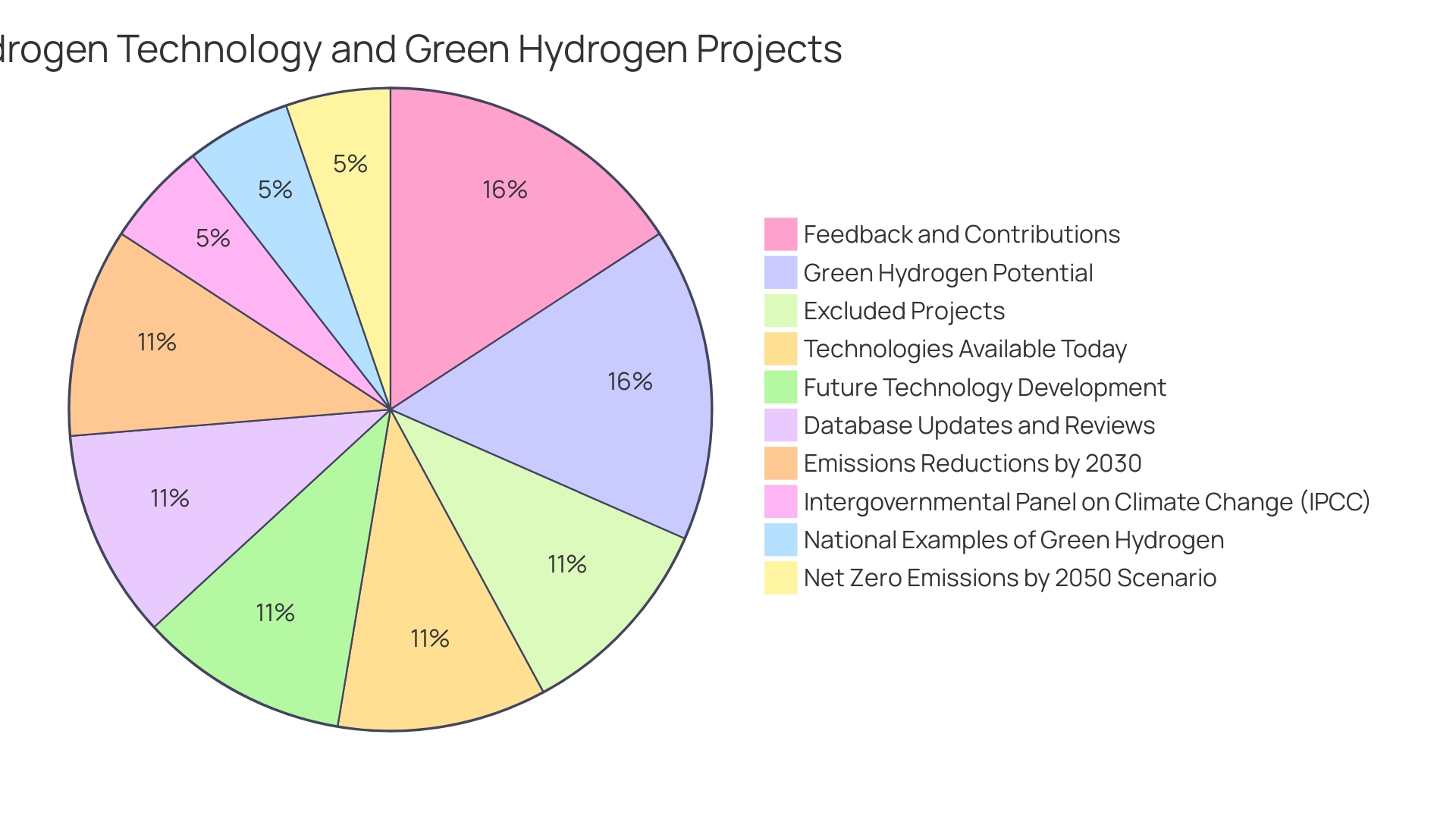
Green Hydrogen: Production, Advantages, and Challenges
Green hydrogen, a fuel generated through the electrolysis of water using renewable energy, stands at the forefront of energy transition technologies. This process, which results in zero greenhouse gas emissions, involves an electric current passing through water to separate hydrogen and oxygen. The clean electricity required for this can be sourced from an array of renewable options such as solar, wind, or hydropower, which underscores the eco-friendly nature of green hydrogen production.
- Electrolysis is not only a classroom demonstration but also a scalable commercial solution termed power-to-gas. This technology has no byproducts other than hydrogen and oxygen, and recent advancements are making it more cost-effective and efficient.
- According to a study published in Nature Materials, innovations in green hydrogen production are likely to drive down costs and hasten its adoption as a sustainable energy substitute.
- Current research indicates that green hydrogen could represent approximately 10% of global energy markets in a net-zero emissions scenario, highlighting its critical role in mitigating climate change.
Despite its potential, green hydrogen production must be viewed through a life-cycle lens, considering not just operational emissions but also those from manufacturing related equipment like solar panels and electrolyzers, as well as any hydrogen leakage during transit.
Industry case studies, such as the HyFlexPower project at a Smurfit Kappa paper mill in France, showcase the practical application of green hydrogen. This project demonstrated that renewable electricity can be converted into green hydrogen, stored, and then used to power a turbine during periods without wind or sun. This Power-to-Hydrogen-to-Power approach is particularly beneficial for industrial sites, providing them with renewable electricity and aiding in decarbonization efforts.
Green hydrogen also has significant implications for heavy mobility sectors such as aviation and maritime transport. The commitment of companies like ENGIE, with a dedicated team of 200 employees working on renewable hydrogen, positions them as leaders in this evolving market.
Furthermore, the role of hydrogen as an energy carrier is gaining traction. As the most abundant element in the universe, hydrogen's ability to be stored either as a liquid or gas and then utilized without greenhouse gas emissions makes it a versatile and crucial component of a sustainable energy landscape. This transition is supported by the European Commission and is vital for the decarbonization of energy-intensive industries.
Despite its benefits, there are challenges to be overcome, including material resistance due to hydrogen's faster and hotter flame compared to natural gas, which necessitates improved safety measures for applications such as fueling turbines.
As we move towards a more sustainable future, the exploration of green hydrogen as a clean and versatile energy source is essential for industrial decarbonization and the overall reduction of carbon emissions in our energy systems.
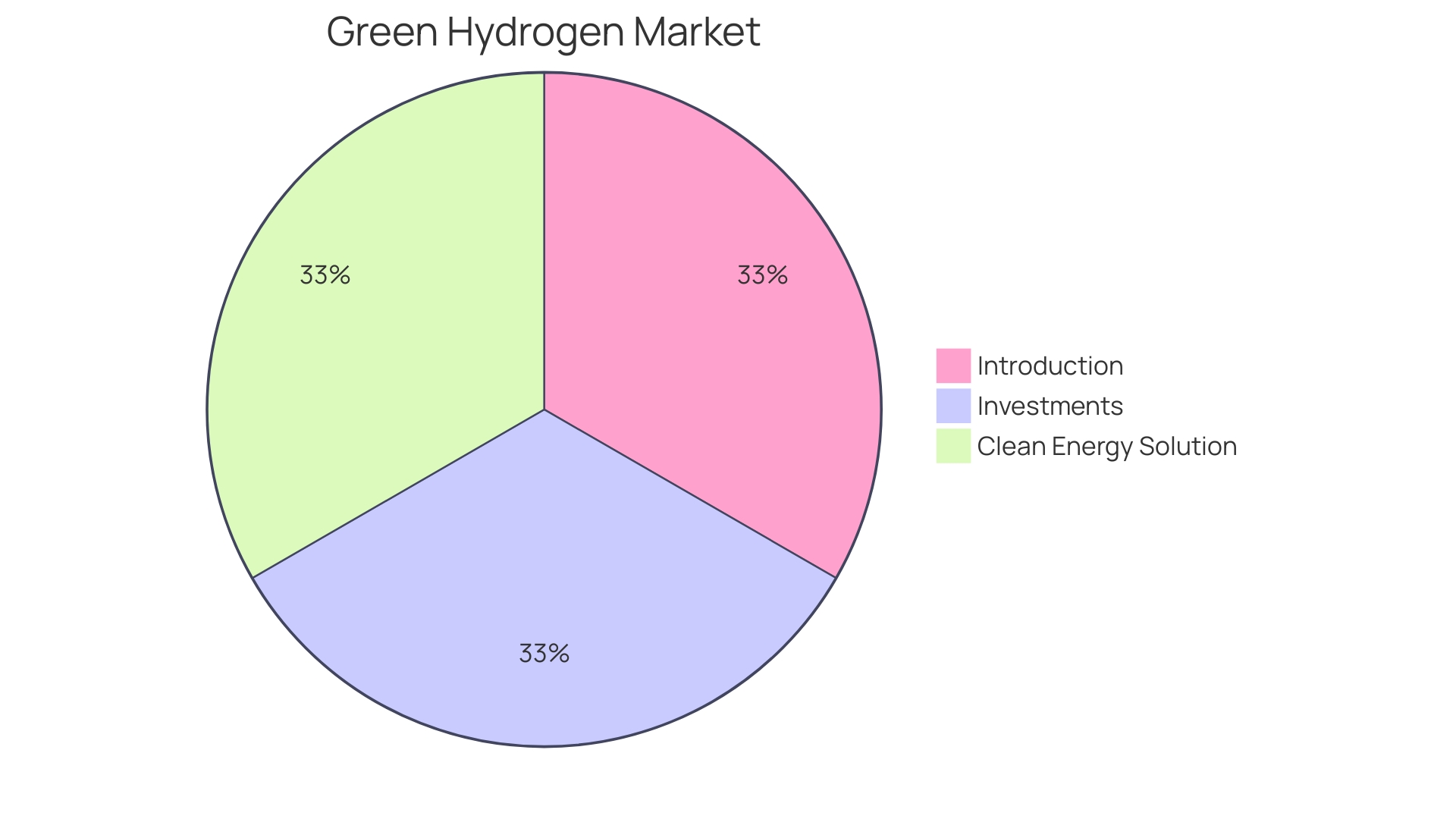
Innovative Technologies: Electrolysis and New Breakthroughs in Hydrogen Production
Electrolysis, a term derived from Michael Faraday's 19th-century work, is a pivotal process in generating green hydrogen, a clean energy carrier. Electrolyzers, powered by renewable energy, split water into carbon-free hydrogen and oxygen. While less than 1% of U.S. hydrogen is produced renewably, advancements in electrolysis are poised to increase this share significantly. Industrie De Nora, a global leader in electrochemical solutions, is at the forefront of these advancements. With a comprehensive portfolio including electrodes and components designed for water electrolysis, the company is driving efficiencies in green hydrogen production.
Innovatively, Industrie De Nora holds a substantial stake in thyssenkrupp nucera AG & Co. KGaA, focusing on electrolyzer development. This collaboration has led to the creation of the Dragonfly® electrolyzer, a high-quality, versatile product designed to streamline the transition to green energy. CEO Paolo Dellachà emphasizes the company's commitment to R&D as the foundation for their leading role in the sector's evolution.
The importance of electrolysis in hydrogen production cannot be overstated. Traditional production methods, like steam-methane reforming, contribute significantly to CO2 emissions, equating to the combined output of the UK and Indonesia. The quest for green hydrogen is gaining momentum, with over 1,400 projects announced globally, representing an investment of USD 570 billion. These projects are set to produce 45 million tons of hydrogen annually, marking a significant leap toward reducing the carbon footprint of hydrogen production.
In this context, the Hydrogen Council, together with McKinsey & Company, highlights hydrogen's potential to decarbonize challenging sectors, enhance energy security, and drive economic growth. As the sector reaches an inflection point, it faces both growth opportunities and challenges such as cost increases and regulatory uncertainties.
To fully harness the benefits of electrolysis in green hydrogen production, a comprehensive approach is advocated. This includes the development of materials for electrocatalysts that maintain their properties even as nanostructures, to increase the active surface area crucial for efficient electrolysis. Moreover, the selection of synergistic materials is critical for enhancing performance when alloyed with other metals. These strategies are integral to the ongoing journey towards sustainable hydrogen production and the broader transition to clean energy.
Infrastructure and Regulatory Support for Green Fuels
As we move towards a greener future, the integration of alternative fuel technologies is paramount. Specifically, the infrastructure required for the storage, distribution, and utilization of these green fuels is a critical component. This includes the establishment of efficient electric vehicle (EV) charging and hydrogen refueling stations. Notably, recent regulatory efforts, such as Regulation (EU) 2023/1805, have underscored the necessity for an adequate supply of on-shore electricity in trans-European transport network ports to meet the burgeoning demands of sustainable maritime transport.
Moreover, the evolving landscape of fuel technologies mirrors the challenges faced by the utility sector in California, where safety standards and economic trade-offs are continuously balanced against the backdrop of catastrophic wildfires. This analogy serves to highlight the complexity and necessity of stringent safety measures and thorough monitoring in the deployment of hydrogen infrastructure, as recommended by experts.
Indeed, the International Energy Agency's Global EV Outlook underscores the rapid growth in EV sales worldwide, signaling an urgent need to scale up the requisite infrastructural support. Additionally, insights from the Intergovernmental Panel on Climate Change's Sixth Assessment Report spotlight hydrogen—particularly green hydrogen—as a versatile energy carrier with the potential to decarbonize diverse sectors, given the acceleration of technological advancements.
In this vein, robust policies and regulations play a vital role in fostering the adoption of green fuels. They provide the necessary framework for ensuring the sustainability and safety of these emerging technologies, thereby facilitating a transition to cleaner, more efficient transportation solutions that align with global environmental goals.
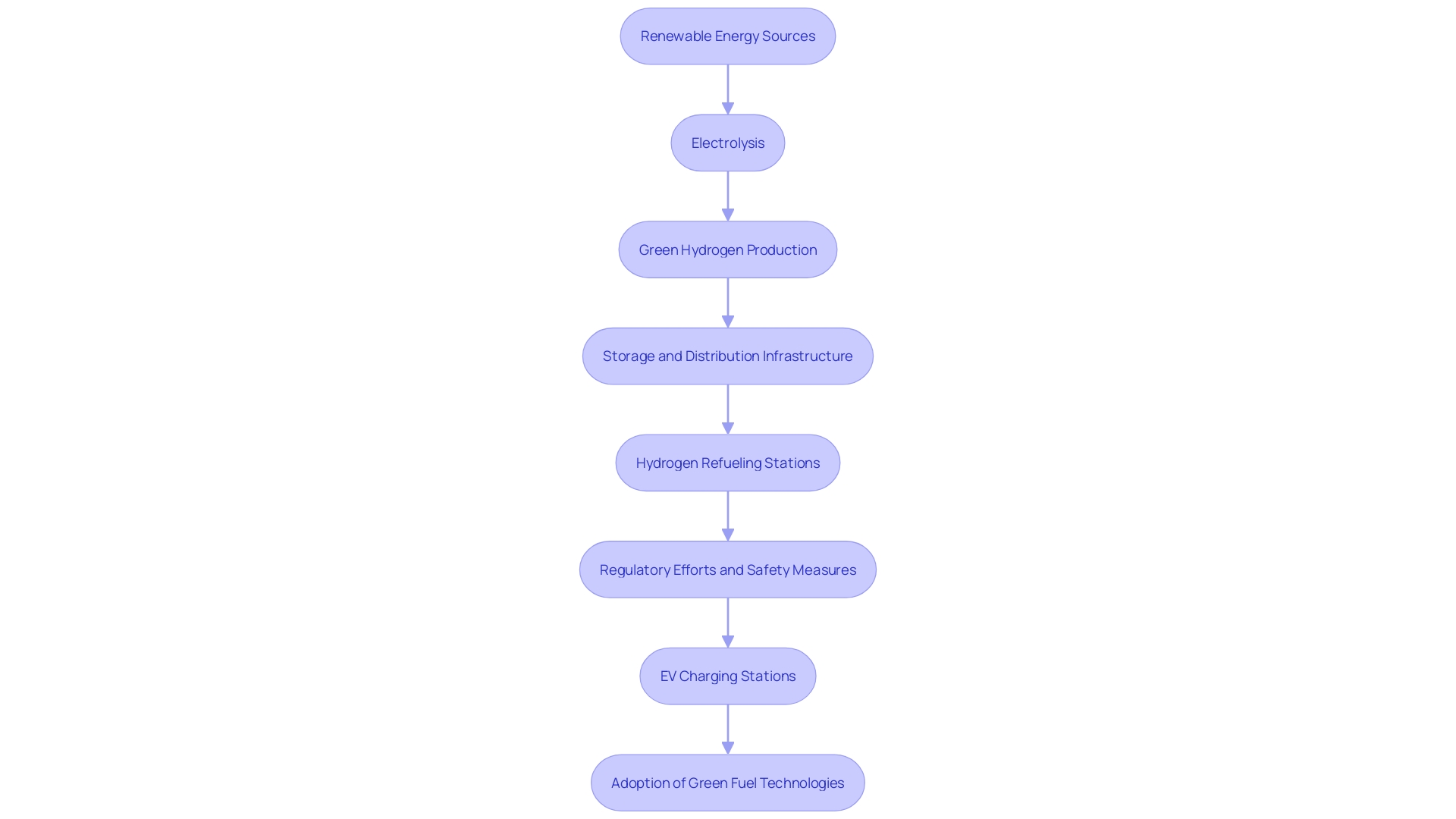
Conclusion
The evolution of green fuel technologies is driven by human innovation and dedication to a sustainable future. Spearheaded by experts in energy and environmental sectors, the quest for alternative fuels has achieved significant milestones. The energy sector's transformation is exemplified by the shipping industry's push for cleaner energy and global investments in renewable energy.
Renewable energy's growth is notable, with its share of total primary energy consumption rising to 14.6% in 2023. The record-breaking generation of renewable electricity underscores the tangible impact of green technologies and the increasing reliance on renewable sources.
Understanding key concepts in green fuels is crucial. Green hydrogen, produced via electrolysis, offers versatility and ease of storage as a sustainable alternative. Clean energy also extends to resources with reduced carbon footprints like nuclear power and natural gas.
Advancements in electric vehicles (EVs) are leading the shift towards sustainable transportation. Battery technology, charging infrastructure, and increased range capabilities play pivotal roles in the expanding market for EVs.
Biofuels, such as biodiesel and renewable diesel, contribute to reducing greenhouse gas emissions. They offer an efficient waste-to-energy conversion process, particularly advantageous for sectors where electrification poses challenges.
Hydrogen fuel cell technology transforms the energy landscape, offering a continuous and sustainable energy source. The global project pipeline for hydrogen expands, and the market for hydrogen fuel cells thrives. Challenges like cost, infrastructure development, and regulatory uncertainty persist.
Successful case studies across industries highlight the importance of partnerships, innovation, and education in implementing green fuel technologies. Government policies and technological breakthroughs shape the future outlook of green fuels, driving investment and growth in industries like electric vehicles and battery manufacturing.
In conclusion, the evolution of green fuel technologies is driven by human innovation and dedication to a sustainable future. The industry's milestones, collaborative efforts, and the promising horizon of a cleaner energy landscape shape its trajectory.




